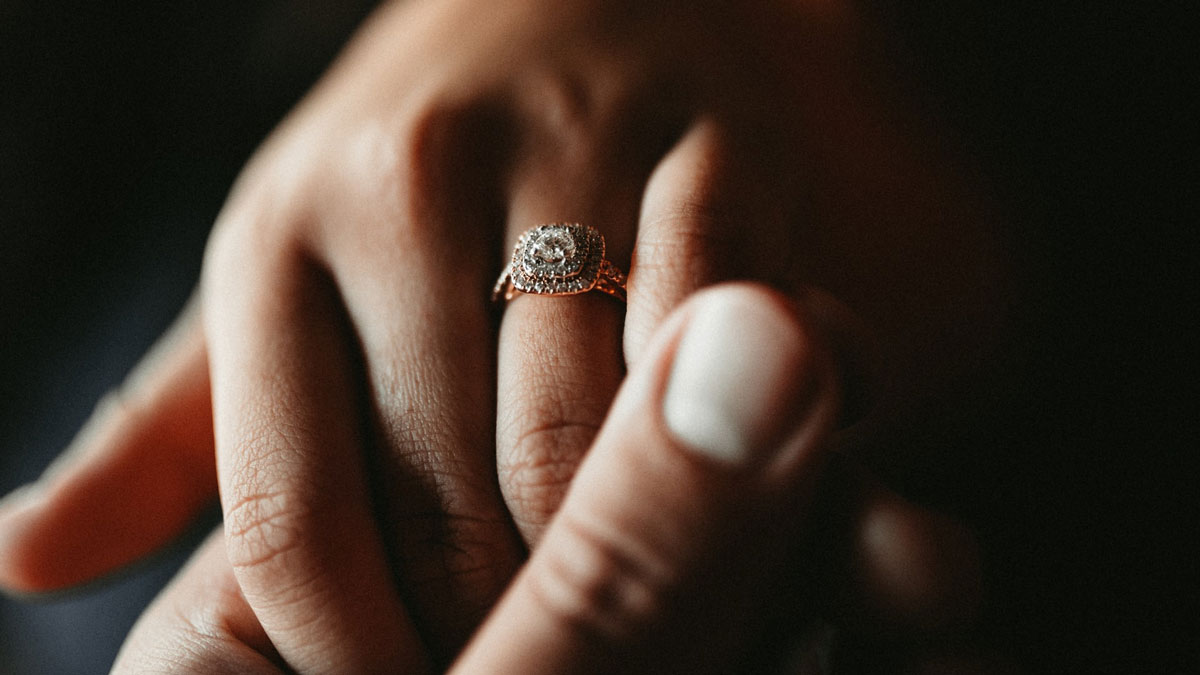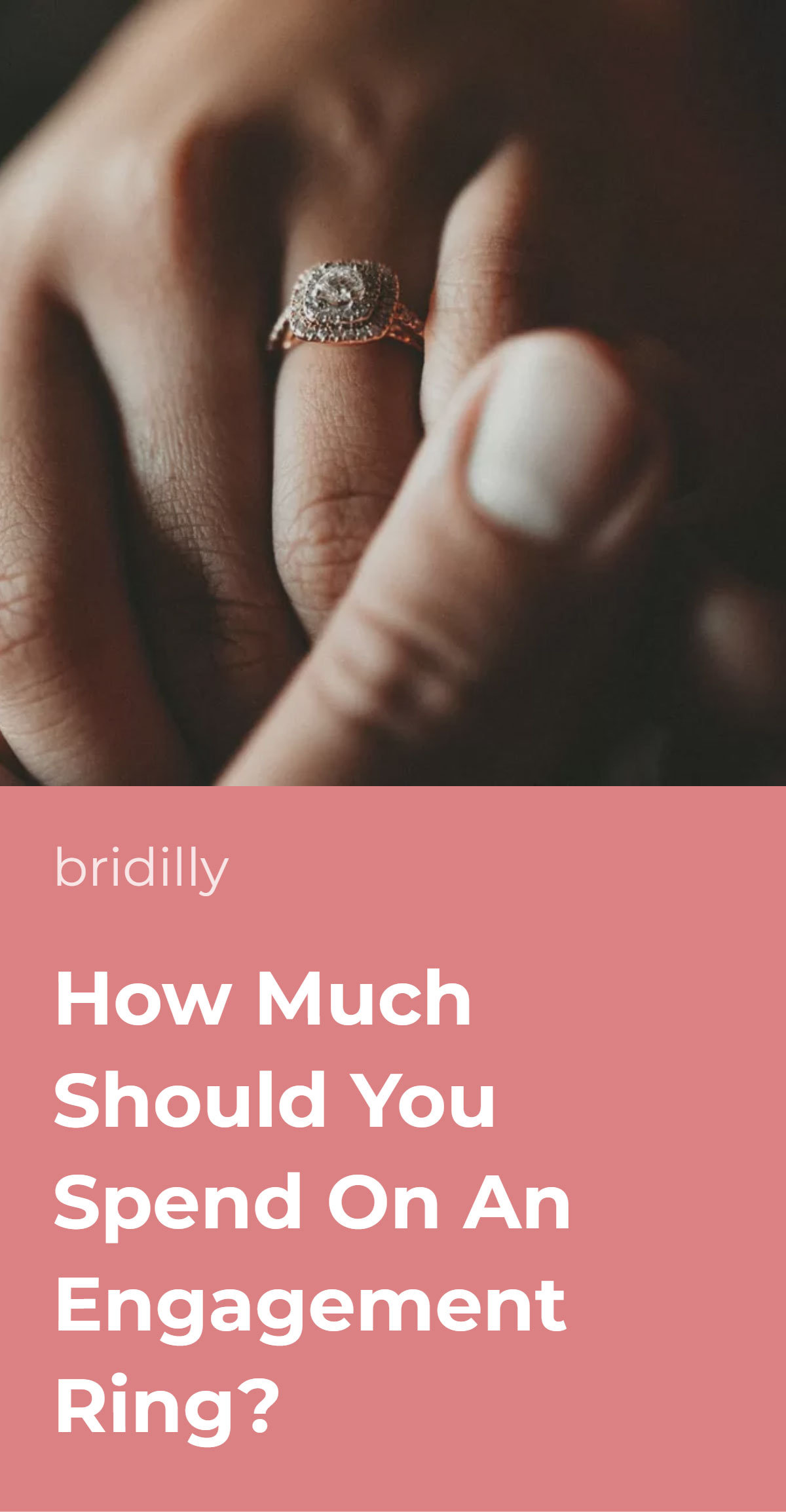There’s a lot to consider when you’re planning to propose, and one of the trickiest questions is “how much should you spend on an engagement ring?”.
Don’t expect to get a direct answer – there’s no universal rule setting out the right engagement ring price.
A few decades ago, men were forced to spend immense sums to get an engagement ring with a large diamond regardless of their income or lifestyle.
Thankfully, times change. While some are still willing to spend well over $20,000 on a ring, today, it’s a matter of personal choice rather than obligation.
Your engagement ring budget should be based on your partner’s preferences, your lifestyle and attitude to spending, and your financial situation, not societal expectations.
Table of Contents [show]
The Average Spend on an Engagement Ring
Knowing the average engagement ring cost can help determine how much you should spend.
According to recent data, the average engagement ring spend is continuously falling. Men used to spend about $7,000 on average in 2018, $5,900 in 2019, and $3,700 in 2020.
Nearly 10% of survey respondents have spent under $1,000. Of course, there are also extremes – some are ready to spend well over $500,000 on an engagement ring.
Still, most men spend between $3,000 and $5,000 on an engagement ring regardless of the trends and economic situation.
That’s a reasonable price for a gold solitaire ring with a round cut 0.5-carat diamond, the most popular engagement ring style.
For $15,000-$30,000, you may get a ring with a 2-carat or 3-carat diamond, depending on the stone’s quality.
If you’re willing to spend $30,000-$50,000, you may afford up to 5 carats, though you may have to compromise the color and clarity.
The price of an engagement ring also depends on the design and diamond cut.
For instance, a ring with a 1-carat marquise-cut diamond will cost you $2,400 on average, about $500 less than a round-cut diamond of the same size and quality.
Eternity bands are gaining popularity. The total diamond weight in an eternity band typically ranges from less than a carat to 7 carats. The average price is $4.500 for a full eternity band and $3,000 for a half-eternity band.
Overall, round, oval, heart, and princess-cut diamond rings are the most expensive due to the popularity of these shapes and the complexity of making a perfect cut.
On the other hand, pear, emerald, and Asscher-cut diamonds are the least expensive.
Naturally, the average price of engagement rings with alternative gemstones is lower than that of diamond rings. Sapphires, rubies, emeralds, and opals are in lower demand and therefore cost less.
An engagement ring with a clear and bright 1-carat sapphire may cost you about $1,500-$2,000. For $3,000, you can get a 3-carat sapphire with slight inclusions or top-quality 2-carat stone.
Of course, the ring’s price also depends on the precious metal. The most popular option is 14K white gold with an average price of about $37 per gram, followed by platinum with an average price of about $35 per gram.
A women’s ring typically contains 1-7 grams of gold or 3-10 grams of platinum, as the latter is denser. Note that prices of precious metals tend to fluctuate.
The Two Salary Rule – a Myth?
You may have heard of the two-salary rule, stating that two monthly salaries are a traditional amount men should spend on an engagement ring.
For instance, if you’re making $60,000 annually, you would have to pay $10,000 for the ring.
You’re right if that figure doesn’t add up with the average engagement ring price. With the average annual wage in the U.S. exceeding $65,000, the average engagement ring price should have been over $10,000.
So, where did the two-monthly-salary rule come from, and should you follow it? The truth is – one of the reasons we see a decrease in the average price of engagement rings every year is the declining relevance of this rule.
The custom appeared in 1977 when a diamond mining and trading company De Beers launched their famous commercial. The ad showed a man proposing to his lover on a beach.
As the ring appears on the screen, we hear the narrator say: “How else could two months’ salary last forever? A diamond is forever. De Beers.”
This witty slogan has revolutionized the diamond industry and forced millions of men worldwide to spend multiple monthly salaries on an engagement ring. Only after nearly 50 years did the campaign begin to lose its relevance.
Today, most men justifiably consider spending two or more salaries on a ring unreasonable. You shouldn’t sacrifice your lifestyle to propose, and nor should you start your married life with debt.
How to Calculate Your Budget
There are numerous factors to consider when setting your engagement ring budget and numerous ways to calculate it.
Forget about the two monthly salary rule – it’s far too simple for the modern world and will only put pressure on you.
Setting your budget based on the average spend isn’t wise either, as many couples fall far below or above the average. Therefore, you should first consider your lifestyle, partner’s preferences, and financial situation.
The truth is, there’s no universal formula for calculating an engagement ring budget. Most people spend about 5%-6% of their annual income on the ring or half of one month’s salary.
The goal is to find a sweet spot between your partner’s expectations, your attitude to spending and lifestyle, and your income and expenses.
The purchase of a ring shouldn’t make your life harder, but you shouldn’t spare on it either.
Considering your financial situation and lifestyle is simple, and usually (but not always), these factors are closely tied. Some people would never buy a T-shirt over $10, while others buy $2,000 designer handbags every month.
It isn’t solely about what you can spend – it’s about what you’re willing to spend. Consider your and your partner’s attitude to material things and the importance you place on them.
Don’t forget that you should consider your financial obligations, not basic annual income.
Two people with the same salary may have different engagement ring budgets depending on the presence or lack of debts and other expenses.
Considering your partner’s expectations is a bit trickier, though you likely know your partner well.
Some women dream of a 3-carat diamond ring, while others will be happy to get even a plain silver band to symbolize commitment.
How Much is Too Much?
Each man has a different budget, and each woman has different expectations. Unless your spending negatively affects your life, there’s no right or wrong engagement ring price.
Don’t forget that you will likely have to spend a ton of money on the wedding in a year or less. Weddings are expensive – the average cost of a wedding in the U.S. exceeds $30,000.
You don’t want to get into debt aiming to please your partner. Excitement about getting an expensive engagement ring will fade quickly, and financial difficulties will only burden your relationship.
As a rule of thumb, one monthly salary is the highest you should spend on the ring unless you aren’t planning a wedding, or your parents cover all the costs.
According to surveys, only under 2% of men follow the two-monthly-salary rule.
Does the Ring Price Matter?
After all, does the engagement ring price matter? Each woman would answer this question differently. However, surveys show that men tend to overestimate the ring price importance.
Nearly 40% of women think that an engagement ring should cost under $1,000, 25% – between $1,000 and $3,000, and only 8% expect a ring with a price tag over $10,000.
The truth is, over 70% of women would rather spend money on a nice honeymoon than an engagement ring, and most men can likely agree with that.
Furthermore, unless you’re shopping for the ring together with your partner, she will never know the price. She may estimate it, but the price doesn’t matter if the ring makes her happy every time she looks at it.
What If You Can’t Afford a Ring?
If you can’t afford to buy an expensive engagement ring, get one you can afford – it’s that simple. Even if the best you can afford is a plain silver band, commitment is worth much more than any diamond.
However, some tips can help you fit a ring into your budget while meeting your partner’s expectations.
For instance, if your S.O. wants a 2-carat diamond ring but the money is tight, you may get a lab-grown diamond instead of a natural one.
The chemical structure of lab-grown diamonds is the same as that of real stones.
They are equally durable and sparkling but made in a lab rather than mined. Studies show that about 45% of women don’t mind getting a lab-grown diamond ring.
Alternatively, consider which of the 4 C’s you’re ready to compromise – cut, clarity, carats, or color. Some women care the most about diamond weight, while others would prefer a flawlessly clear and colorless but small stone.
Another way to fit a ring into your budget is to pay for it in installments. Most jewelers offer a layaway program that allows you to reserve a ring by paying a 10%-20% deposit and repay the rest in 3-12 monthly installments.













No Comments Add one
Leave a Comment